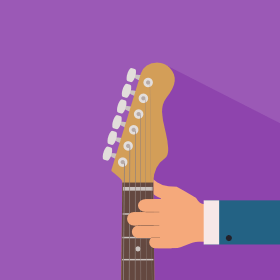
Open guitar chords are simply awesome. They’re the first chords you’ll learn as a guitarist, but that doesn't mean they're only for beginners. They have a unique, full sound that you'll be using for the rest of your guitar journey. Even guitarists who’ve been playing for decades still love to use open chords!
In this article, you'll learn exactly what open chords are, find out the best order to learn open chords, and play 6 songs that are perfect to practice these chords. I'll also give you some practical tips along the way.
Let's check it out!
What are open guitar chords?
Here’s the open D chord:

As you can see, the D string is ‘open’, meaning that we don’t place a finger on that string. This is indicated by the circle at the start of the string.
Another quick example, here’s an open A chord:

This one has two ‘open’ strings: the A string and the high E string. Simple right?
Now, open chords are useful for any guitarist, both beginners and advanced players. They’re not too hard to learn and have a rich and full sound. They’re sometimes referred to as ‘cowboy chords’, but it’s not entirely clear why. You can imagine a cowboy at a campfire though, strumming their guitar using only open chords!
What kinds of open chords are there?
There are 24 open chords that are used the most. In this article, we’ll discuss all of them in the order that makes the most sense to learn them in.
We’ll follow the structure from my course Guitar Chord Bootcamp: Open Chords:
1. First Major Chords: E, A, D
2. First Minor Chords: Em, Am, Dm
3. More Major Chords: G, C, F
4. Dominant Chords: E7, A7, D7, G7, C7, B7
5. Minor Seventh Chords: Em7, Bm7, Am7, Dm7
6. Major Seventh Chords: Cmaj7, Gmaj7, Fmaj7, Dmaj7, Amaj7
With each step, I’ll also give you a practice song!
First Major Chords
These first three chords are so-called ‘major’ chords. It doesn’t matter too much what that means right now. But you can think of ‘major’ chords as sounding happy, whereas ‘minor’ chords, which we'll see in the next section, sound sad or gloomy.
Here’s the open E Chord:

As you can see, there are little numbers in the dots. Those indicate which finger to use:
1 = index finger
2 = middle finger
3 = ring finger
4 = pinky
Here’s the open A:

And finally the open D:

Now, let’s see the chords in action in a quick lesson taken from Guitar Chord Bootcamp: Open Chords.
It’s a song by Milo Green that uses all these three chords. First, give it a quick listen. Notice that the chords light up along with the video, to make it easy to know when you need to switch. Next, try playing along. Don't worry about the strumming! Just focus on playing the chord at roughly the right moment.
Pro tip: use the speed buttons below the video to slow the music down to about 80% at first.
Hope that went well! It can be pretty stressful to play along with some music, especially the first couple of times. So feel free to give it a couple of tries and remember to slow down the music!
If you want some tips on how to memorise these chords and change between them smoothly, try the first couple of lessons from Guitar Chord Bootcamp: Open Chords for free.
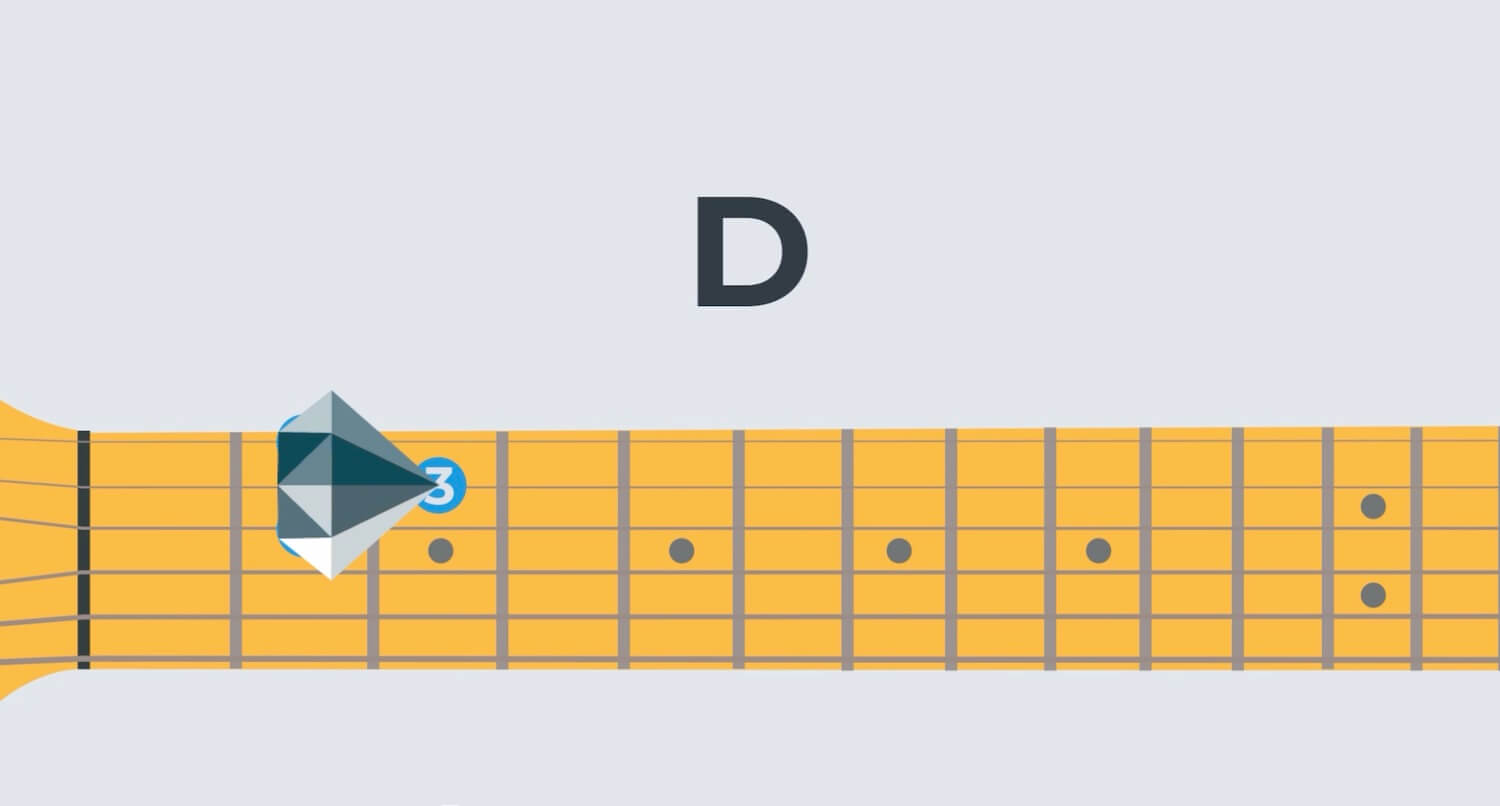
These first few lessons will give you specific tips for the D chord and A chord and give you a song to practice them!
Open Minor Chords
In this section, we’ll cover three minor chords: Em, Am, and Dm.
First, let's take a look at the open Em chord:
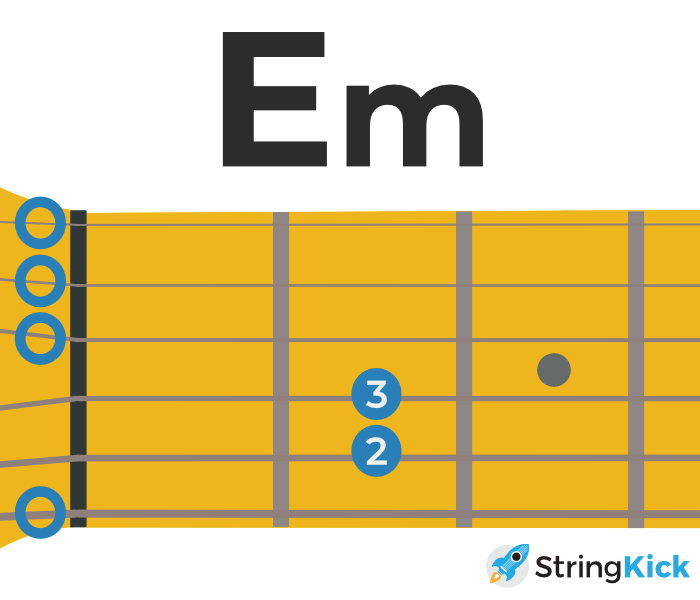
What you might notice, is that this chord is super similar to the E major chord we just saw. All you need to do is take away your index finger on the G string.
Next up is the open Am chord:
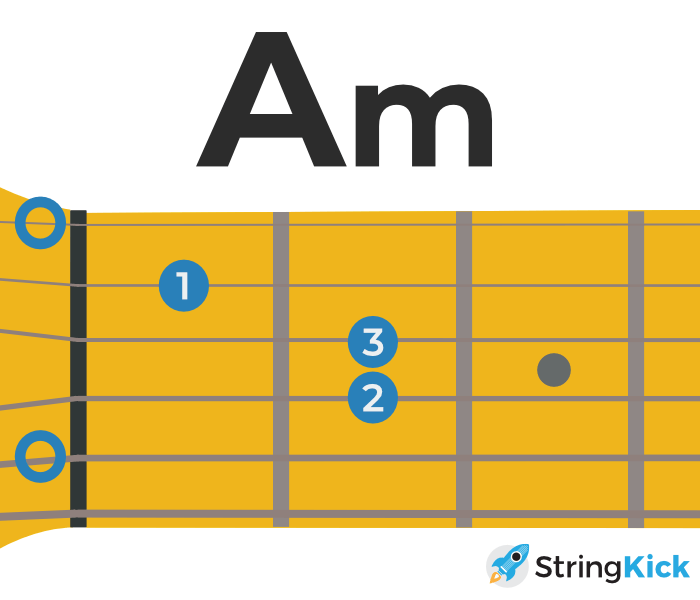
And finally, here’s the open Dm chord:
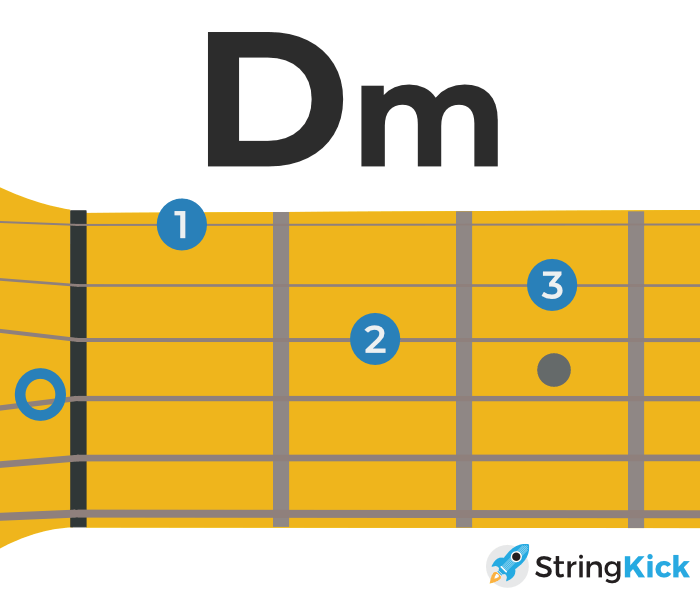
We’ll check out these chords in a song by John Fogerty, once again taken from Guitar Chord Bootcamp: Open Chords. Like the last song, be sure to give it a couple tries to get acquainted with the song and to get comfortable with these chords.
Hope that went well for you! Next up, we have some more major chords.
More open major chords
First up, we have the open G chord:

Notice the little X at the start of the A string: that means the string is muted. That might seem complicated, but your middle finger (on the low E string) will take care of this pretty much automatically. (You actually have to try hard not to mute it!)
Next, let's learn the open C chord:

And lastly, the open F chord:

There's something special about this F chord. As you can see, you'll fret two strings with your index finger! You do so by placing it flat across those strings (also known as a 'barre').
We’ll see these chords in action in this song by The Shins. As before, don’t worry about the strumming and try to play the chords at the right time. Take your time, slow down the song if you want to, and play through it as many times as you like!
That’s all for this section! For more play along songs like this, check out my open chords course. It has 36 songs by artists ranging from The Beatles, Led Zeppelin and Eric Clapton to Jack White, Queens of the Stone Age, John Mayer and Billie Eilish.
Now, for the rest of this article, we’ll be exploring some slightly richer sounds: seventh chords!
Dominant open chords
In this section, you'll learn the six open dominant chords: E7, A7, D7, G7, C7, and B7.
Let's start with the open E7 chord:
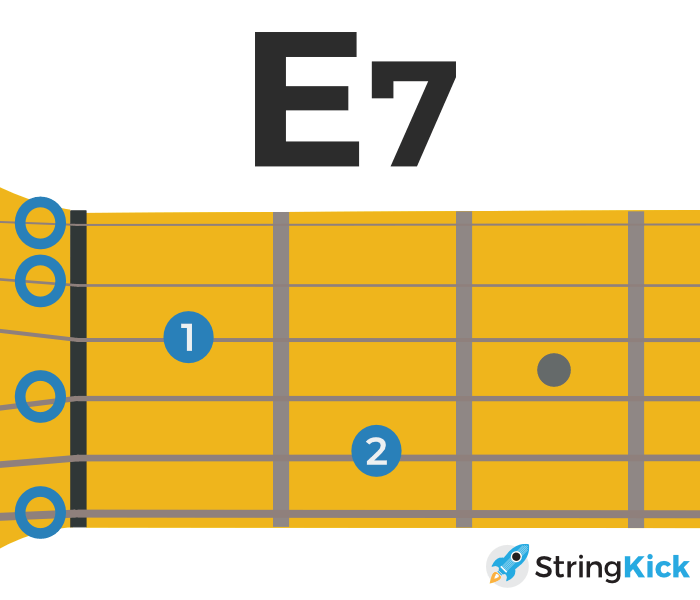
Next up is the open A7 chord:
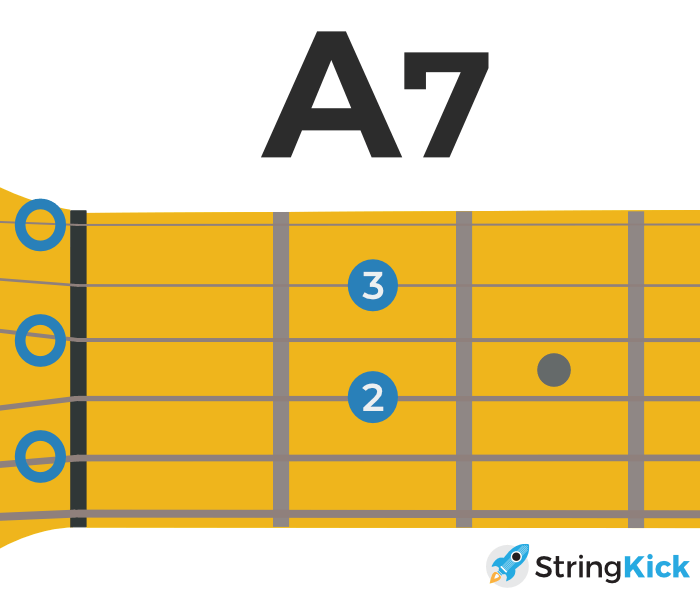
Moving on to the open D7 chord:
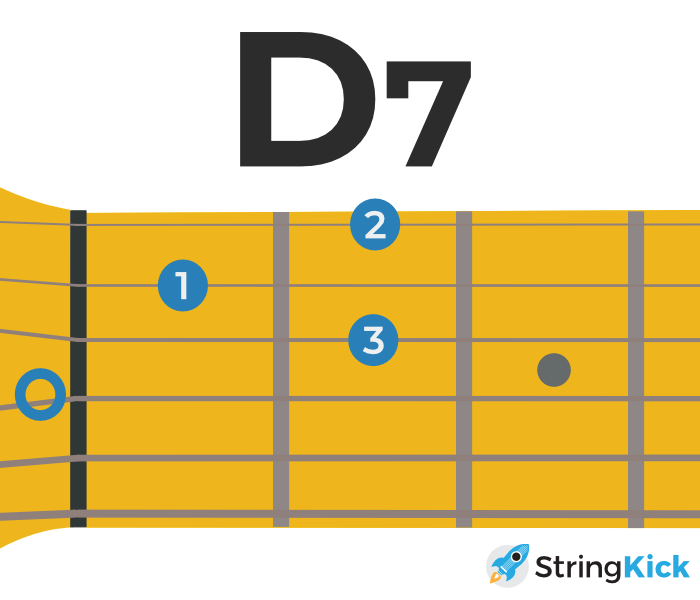
Here's the open G7 chord:
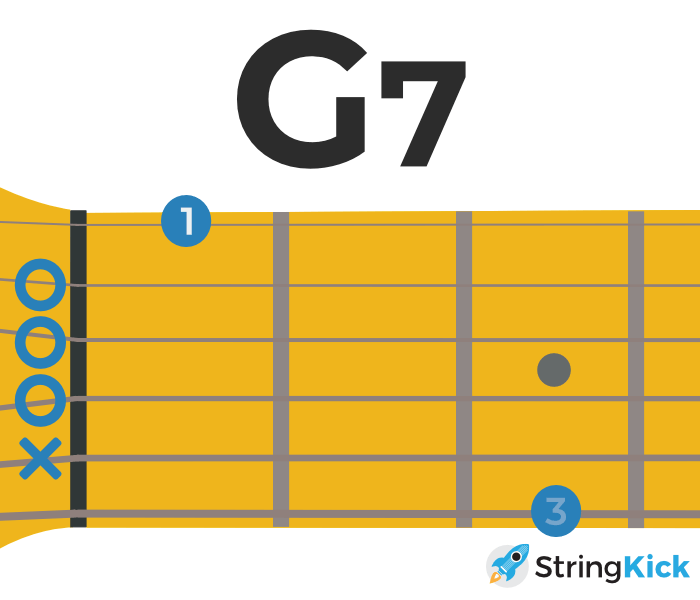
Notice the muted A string again! (Just like we saw with the 'normal' G chord.)
The open C7 chord looks like this:
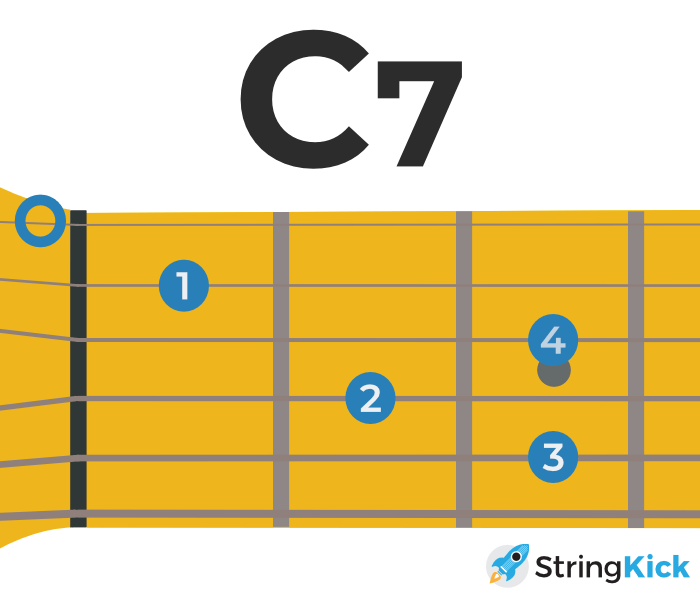
And finally, the open B7 chord:

Next, let’s see a few of these chords in action in song by B.B. King and Eric Clapton. Remember to take your time with this!
Next up: minor seventh chords!
Open Minor Seventh Chords
We’ll cover four different minor seventh chords: Em7, Bm7, Am7 and Dm7.
Let's start with the open Em7 chord:
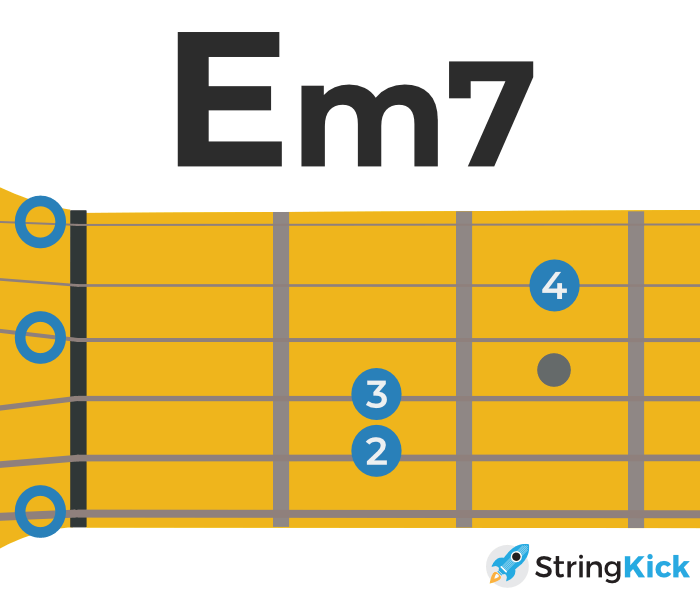
Notice how close this chord is to an Em chord. We just need to add our pinky on the B string!
Moving on, here’s the open Am7 chord:
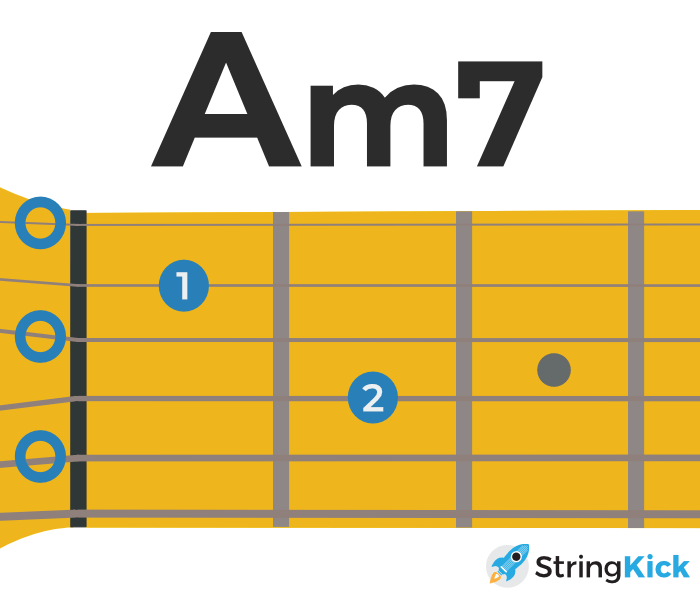
You can easily play this one by taking an Am chord, and removing your ring finger.
Next, here’s the open Dm7 chord:
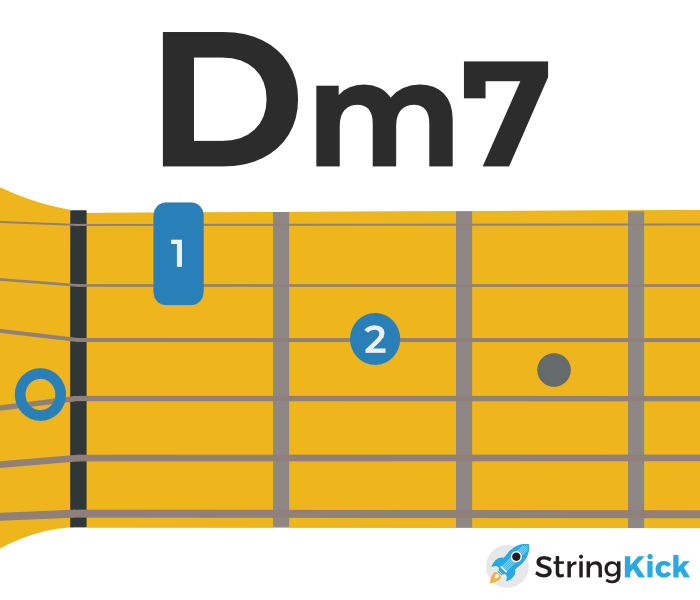
And finally, the open Bm7 chord:
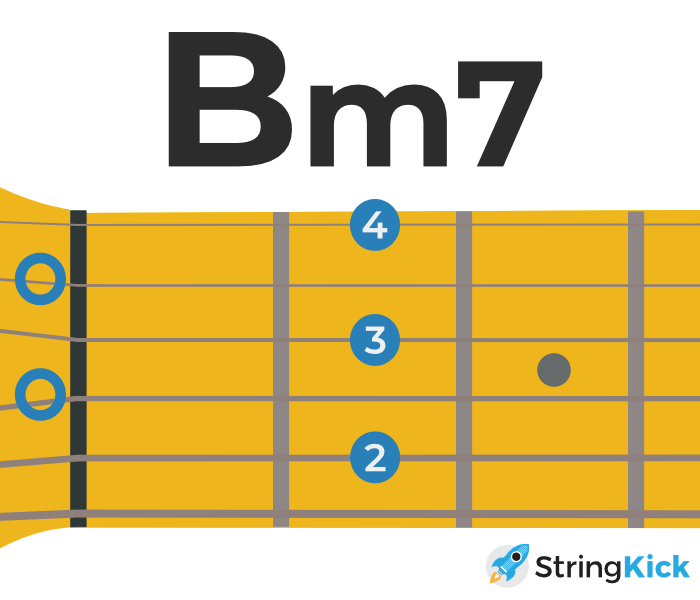
Now, let's hear what these minor seventh chords sound like in a song. Here’s Miss You by the Rolling Stones.
Hope that went well for you! Of course, this song only has two open minor seventh chords and is missing Bm7 and Em7. My open chords course has an entire section on minor seventh chords though, with 7 practice songs. So check out that out for more practice!
Ok! We’ve almost completed our open chords collection! Next up, we’ll add in beautiful, lush major seventh chords!
Open Major Seventh Chords
We’ll learn five different major seventh chords: Cmaj7, Gmaj7, Fmaj7, Dmaj7 and Amaj7.
Let's start with the open Cmaj7 chord:
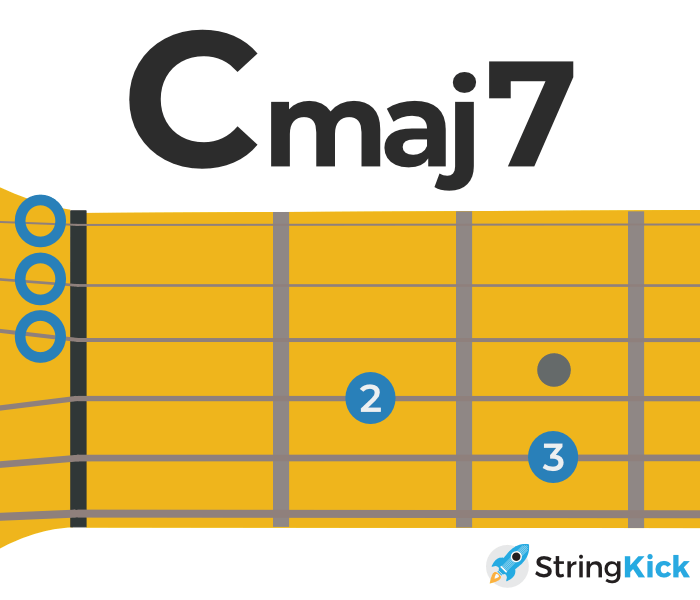
This one’s pretty easy: just play a C chord and remove your index finger!
Next up is the open Gmaj7 chord:
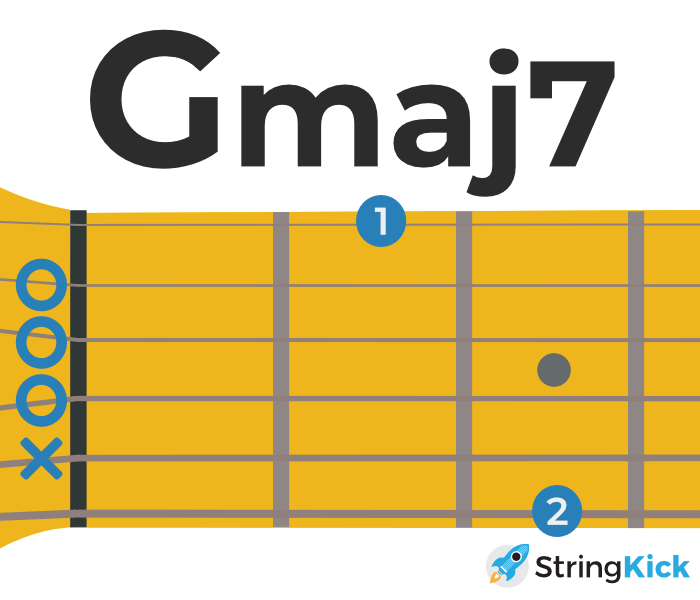
Moving on to the open Fmaj7 chord:
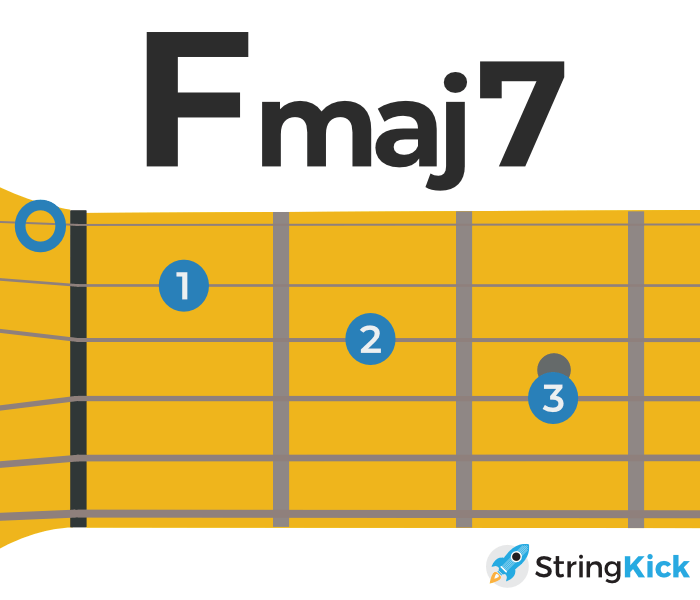
Here's the open Dmaj7 chord:
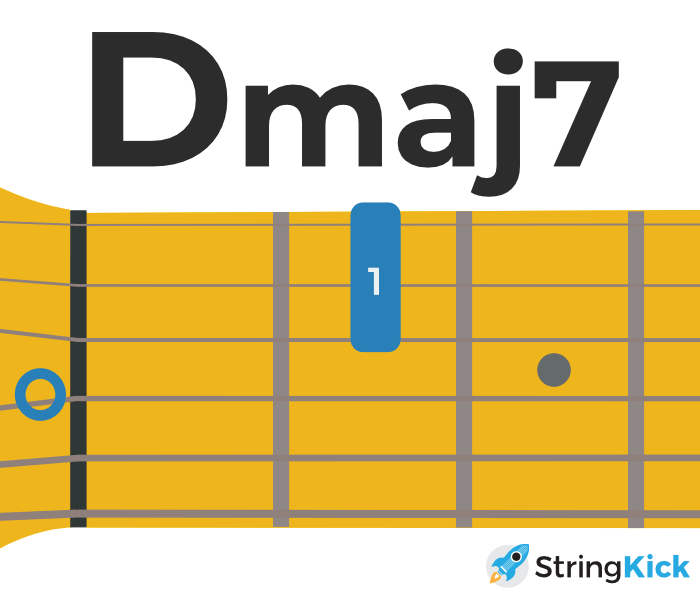
This one requires a but of a special technique: you fret all strings with a single finger (also known as a bar).
And finally, the open Amaj7 chord looks like this:
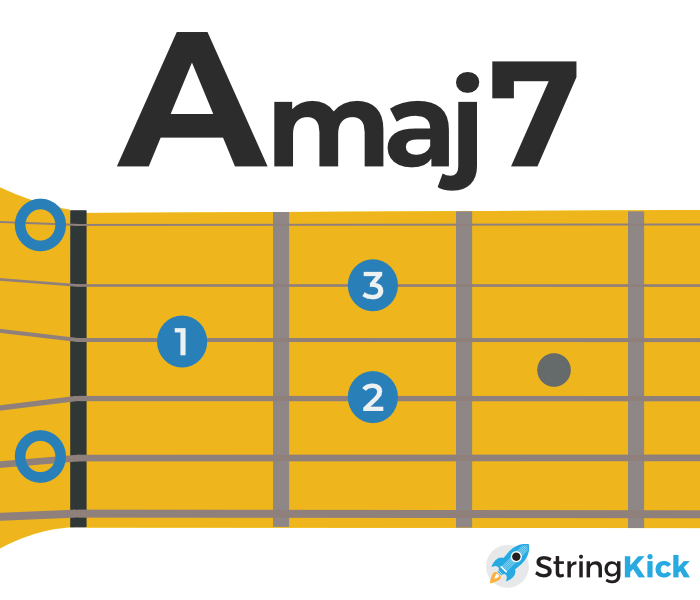
Now, let's hear some major seventh chords in action in a song. Here's "Magnolia" by J.J. Cale, which goes back and forth between Fmaj7 and Cmaj7. Notice how lush and dreamy that sounds!
Next Steps
In time, all these chords and their shapes will become second nature to you. Knowing your open chords well will be super useful for the rest of your guitar journey! They're also a great first towards understanding how the fretboard works (for example, using the CAGED system).
So what’s the key to mastering these chords? Simple: practice! Of course, memorising a bunch of chord diagrams is not very fun, and not very musical. That’s why I created Guitar Chord Bootcamp: Open Chords. It covers all these 24 chords in greater depth with technique tips and special exercises. But most importantly, you’ll be practicing these chords in dozens songs by artists like ranging from The Beatles, Eric Clapton and James Brown to Jack White, John Mayer and Billie Eilish. You can try out the first couple of lessons for free, so check it out!
In short, open chords will form the foundation of your chord library. I hope this guide has given you a solid overview of everything you need to know and where to go next!



![Title image for How to Play Bar Chords: Shapes, Technique, Exercises [Ultimate Guide]](https://www.stringkick.com/wp-content/uploads/2015/04/Barre-Chords-Title-Image.png)
![Title image for How to Read Chord Names and Symbols [Complete Guide]](https://www.stringkick.com/wp-content/uploads/2018/02/Read-Chord-Names-Symbols-Title-Image.png)
![Title image for Guitar Triads Explained [Easy Guide]](https://www.stringkick.com/wp-content/uploads/2023/03/Guitar-Triads-Title-Image.png)
![Title image for Learn Music Theory for Guitar [5-step Roadmap]](https://www.stringkick.com/wp-content/uploads/2022/02/Music-Theory-for-Guitar-Main.png)
![Title image for Guitar Intervals: Explained Easily [Full Guide]](https://www.stringkick.com/wp-content/uploads/2023/05/Guitar-Intervals-Title-Image.png)

